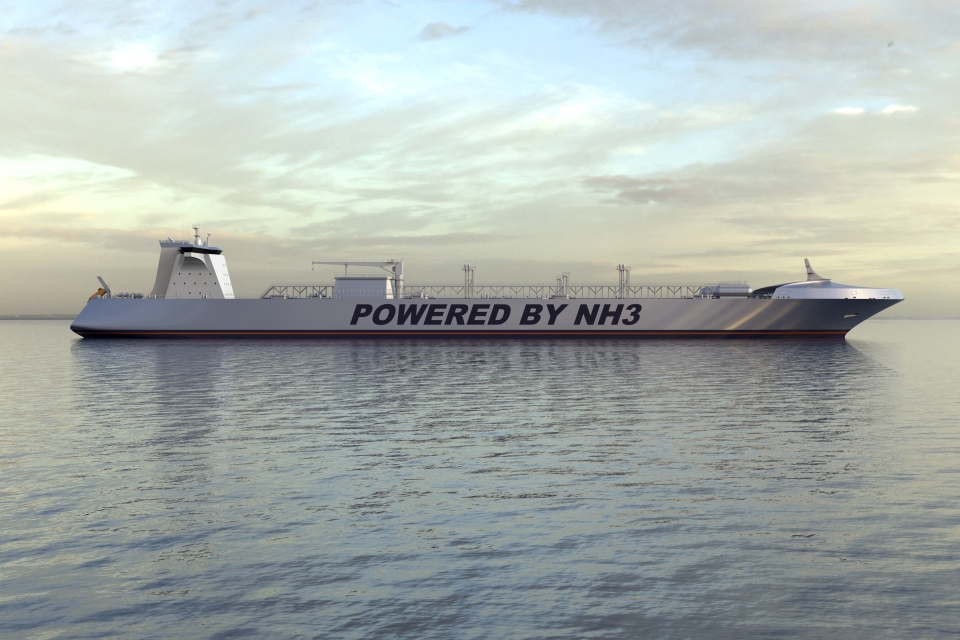The introduction of radically new fuel types requires a ship design approach that predicts the risk factors that these fuels bring. Therefore, C-Job Naval Architects has been applying risk-based design to accelerate the design process for sustainable ships.

This article was written by C-Job Naval Architects Lead Naval Architect Niels de Vries.
Currently, most ship design is based on a prescriptive, rule-based system codified by the classification societies. This sets a standard for how vessels should be built in order to ensure certain levels of safety, based on historical risks. When safety is treated as prescriptive rule compliance, it can hinder design optimisation and omit life-cycle issues from design decision-making.
Risk-based design with functional rules, instead of following prescriptive rules, starts with analysis of the risks inherent in the fuels themselves and then proceeds to deliver vessel designs that mitigate these risks.
Risk-based design is already used in other industrial sectors such as power generation and chemicals, and also for the design of offshore platforms. Methods developed by these industries are now increasingly being applied in the maritime sector. At C-Job, we along with other firms are leading the drive to research and adapt these techniques ahead of the roll-out of commercial projects involving next-generation fuels.
Creativity and change in attitude needed
It is an approach that requires more thought and more detailed designs as all the potential scenarios need to be considered, using methods such as HAZID (hazard identification study) and HAZOP (hazard and operability study).
This calls for a level of creativity and a change in attitude when it comes to dealing with uncertainty. And this is important work. Energy saving on its own is not enough. Renewable fuels in all their forms are vital to delivering a sustainable maritime sector.
Also read: How new C-Job ship design tool reduces lead time by up to 50%
Risk-based assessment
Systems integration for alternative fuels is complex, especially where various pressures and temperatures are involved. Sourcing the right components is vital and so identifying what can go wrong at each stage of a system using risk-based assessment is critical as well as highly detailed work. Conducting the risk assessments and ensuring that the recommendations that come from them are applied accordingly and approved by class is what risk-based assessment is all about.

Our work on sustainable designs has covered a wide range of alternative fuels including liquid hydrogen, ammonia and methanol. In all these, we have found that the application of prescriptive rules can result in too conservative or highly impractical results, often due to a lack of experience or knowledge combined with rules that are just not flexible enough.
The flexibility that risk-based design offers is needed to create better solutions. This also applies to other power generation systems, such as fuel cells. The latter are fundamentally different to combustion engines and so the vessels that use them require a new design approach.
Also read: C-Job: Ships could sail on nuclear power in the future
C-Job projects
An early risk-based design project undertaken by C-Job was the ro-ro ferry Texelstroom, which featured CNG/diesel hybrid propulsion and peak-shaving batteries at a time when the IGF code was still in development.
We conducted risk assessments to prove their designs for the CNG systems as well as explored opportunities with the suppliers to see what components were available that were both technically feasible and safe. The initial design involved using LNG, but ultimately CNG was adopted which, while requiring more space, was cheaper and easier to store and bring up to the required pressure and temperature.
We have also been working with Amogy on the design of their ammonia-fuelled demonstrator vessel. The ammonia will be converted into hydrogen for the polymer electrolyte membrane fuel cell (PEMFC) to provide power on board. We have been responsible for the concept design and HAZID and are now working on the basic and detail design, with the first HAZOP completed.
As it is for a one-off demonstrator, the ship and its system will not be classified, but the classification society, DNV, is observing the entire process and working with us so that the correct steps are followed, allowing it to form a basis for future class-approved designs.
Hazardous zone studies
Our broader research into hazardous zone studies is also laying the groundwork for future projects. This involves analysing zones on board vessels where there is a risk of encountering flammable substances. For example where fuel may be ventilated.
Once these are identified, measures can be taken to quantify the zones accordingly. By having more accurate calculations to work with, hazardous zone plans can be made more practical and adapted for each zone based on its outputs. This is especially useful for smaller vessels where a one-size-fits-all approach is very impracticable.
Also read: Saronic Ferries and C-Job to design first fully-electric RoPax Ferry in Greece
Better solutions
The traditional, prescriptive rules-based method of designing vessels will no doubt continue to have a role to play into the future. But with a new generation of vessels using radically different fuels and power sources now on its way, risk-based design will enable radical changes in the way that these vessels will be designed, delivering better solutions without any compromise on safety.
Picture (top): An ammonia carrier design by C-Job (all pictures by C-Job).








